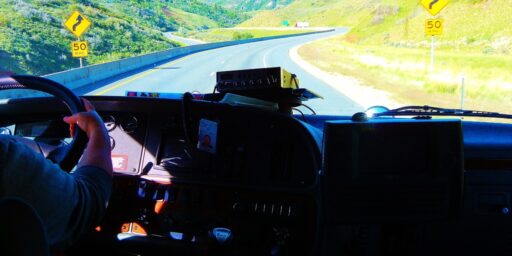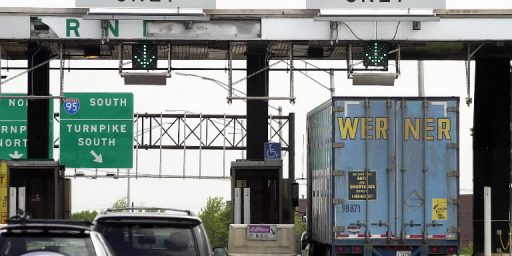Optical Speed Bars Might Trick Drivers into Slowing Down
The Virginia Department of Transportation (VDOT) is using a low tech solution to trick drivers into slowing down.
About two-feet long and a foot wide, the markers are nothing special. But Harrell, a Virginia Department of Transportation traffic engineer, hopes they will help create an optical illusion that could save lives. VDOT is betting there’s enough magic in the illusion that even the biggest lead feet will be tricked into slowing down.
Called optical speed bars, the plastic strips were placed yesterday at intervals that narrow from 24 feet at the start to 15 feet at the end along a half-mile stretch of Lee Chapel Road in Fairfax County. When someone drives over them, the strips create a sort of flip-book effect that makes the motorist think the car is moving faster than it is. The illusion is also meant to get drivers’ attention so they will slow down as they approach the notoriously treacherous curve between the Fairfax County Parkway and Route 123. “This is super low-tech, pretty inexpensive, and hopefully it’s a solution to speeding out here,” VDOT spokesman Ryan Hall said.
An interesting idea, although presumably one that will only work until people who drive the route regularly figure it out.






It will require the driver to ignore the optical illusion that is telling his brain he is going faster than he really is. Not that easy to do but it’s possible. If not, they can always just go back to having marked police vehicles there to give out tickets.
It probably will work all right until it get used too much. Then people will get use to it and learn that they can go faster then their perception then it will cause them to go faster in nonillusion places, which can be a hazard.
Its not even just figuring is out its a conditioning the brain which in many cases is automatic.
When you first switch from driving without cruise control to driving with it, you at first feel like the car is accelerating because you’re used to taking your foot off the gas to apply the break.
With progressive lenses in glasses everything is distorted for awhile, until the brain adjusts then straight lines look straight again.
People that regularly face this illusion will ‘automatically’ adjust.
If it’s really screwing with drivers’ perceptions, I worry about possible safety effects. It doesn’t sound like there are any that would be obvious, but that’s dangerous territory to start stepping into.
I sure hope this is nothing like those optical illusion pictures. You know, the ones that look like a normal picture but if you stare at it just right some other picture pops out at you. Because I never get those pictures. I would hate to get into an accident because some dork in front of me saw an illusion.
The first “epileptic seizure caused by the strips” lawsuit will end this stunt…
road race tracks use descending numbers approaching tight corners to let drivers know when to set-up to apex the turn. sounds like these could be used for the same purpose!fun!